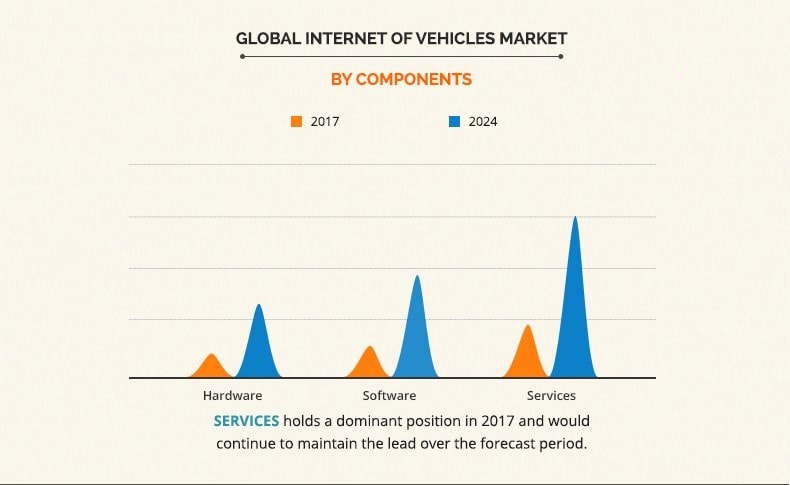The IoV, or Internet of Vehicles, is the next step in the evolution of transports. With sensors that acquire information from the vehicle, environment, behavior from drivers and possibly even information from other vehicles, we open the door to possibilities like better routing and navigation, traffic management and control of air pollution caused by vehicles. The value of the global IoV market was $66,075 million in 2017, and is projected to reach $208,107 million by 2024.

(From the Report: Internet of Vehicle Market by Allied Market Research)
But what is IoV?
The Internet of Vehicles (IoV) is a subset of the Internet of Things (IoT). There’s a growing need for intelligent and connected devices that help us in daily life. IoT devices – smart mobiles, refrigerators, watches, fire alarms, medical sensors, fitness trackers, sensors of autonomous cars, or any other smart objects – satisfy that desire, and the market is booming. IoV solutions combine inside vehicle networks and vehicular mobile internet.
Next-generation mobile technologies will play a crucial role in how the automotive industry evolves. It will mean manufacturers can better manage complex supply chains by embedding data into the systems used for buying and delivery decisions. Robotic manufacturing will be taken to a new level by pulling together data across multiple production sites to crowdsource machine learning.
5G will enable fleet managers to monitor and control the parameters from remote locations through smartphones.
As a new generation of vehicles gets embedded with IoT-powered sensors, they will produce vast data continuously. GPS tracking systems can give information about hard acceleration, mileage, and excessive speeding, allowing fleet owners to look deep into such data to promote safe driving. At the same time, data generated from vehicle telematics systems can assist in the dynamic mapping of roadway conditions to help drivers understand high-risk routes.
Embracing new trends will help decision-makers to remain competitive and keep track of vehicles, so they can improve efficiency, driver performance and offer real-time updates to customers.

